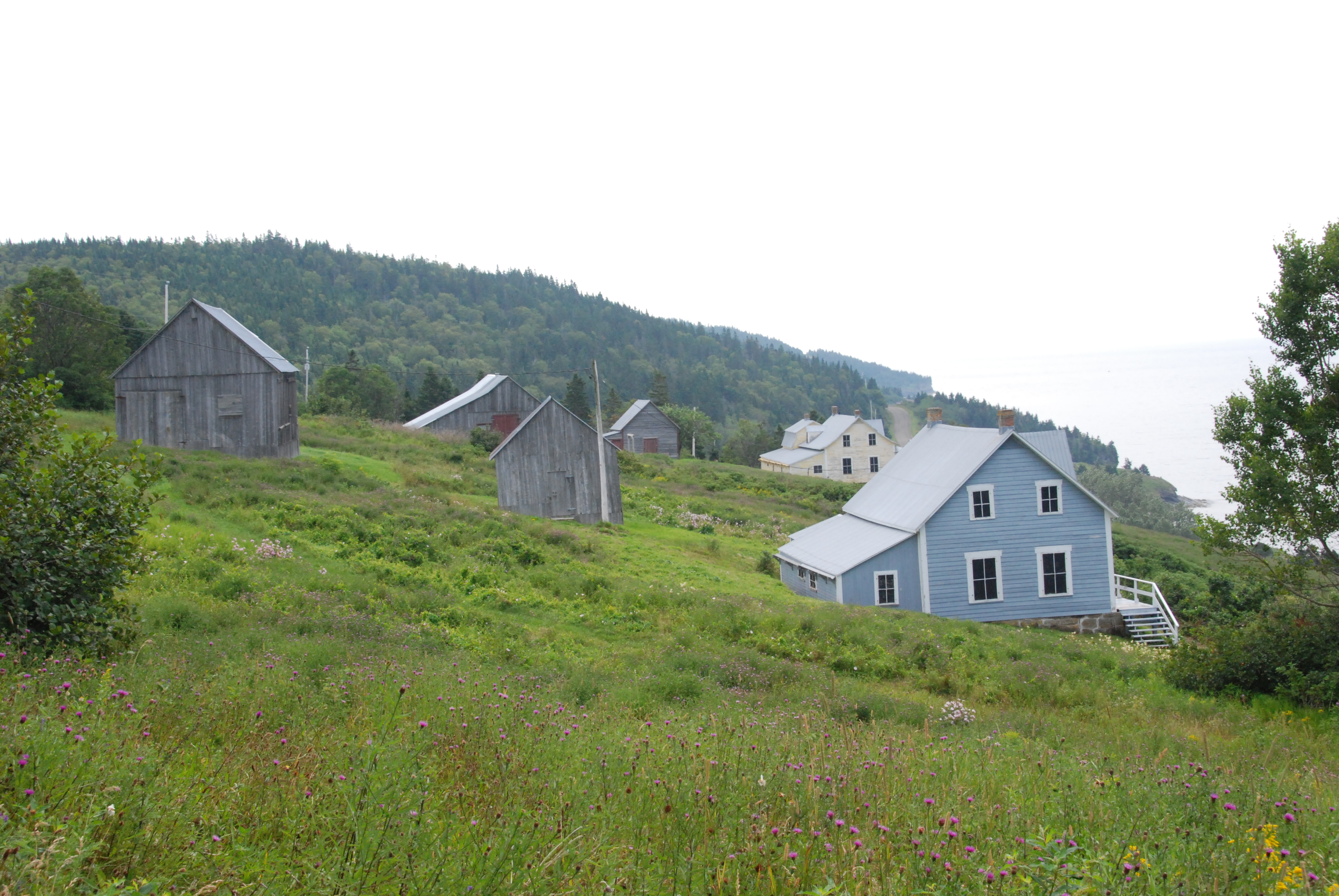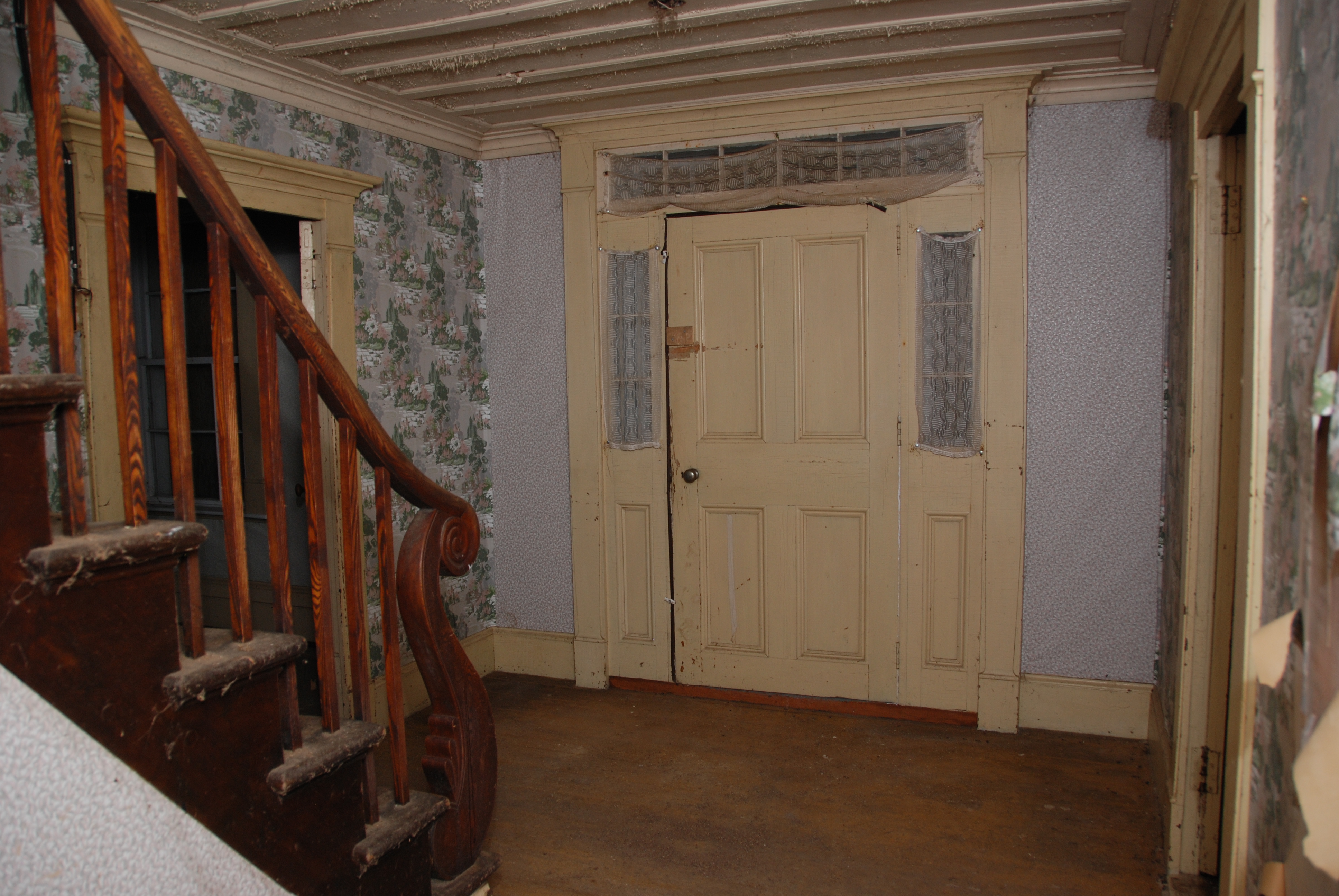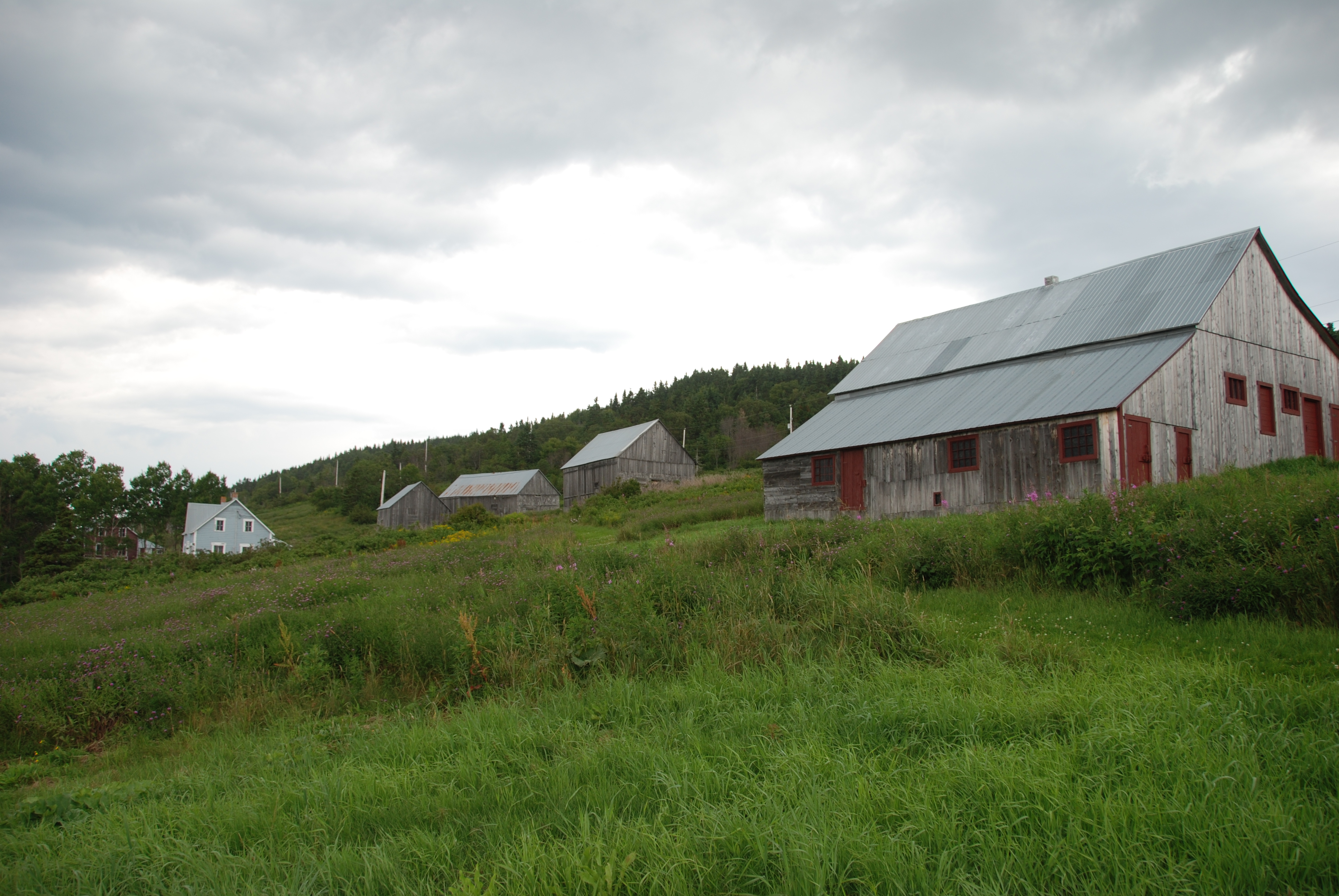In Cap-aux-Os and Forillon National Park of Canada,
Gaspé, Québec, Canada
11 through 29 May 2015
 Those who attended the 2013 Gaspé-Percé VAF will remember the abandoned houses, barns and outbuildings hugging the steeply inclined slopes of the Forillon Peninsula. Summarily recorded soon after the creation of the park, they are the extant remnants of a vibrant, multicultural settlement expropriated over forty years ago.
Those who attended the 2013 Gaspé-Percé VAF will remember the abandoned houses, barns and outbuildings hugging the steeply inclined slopes of the Forillon Peninsula. Summarily recorded soon after the creation of the park, they are the extant remnants of a vibrant, multicultural settlement expropriated over forty years ago.
One of the Forum workshops addressed the question of how to best historically preserve and interpret the Grande-Grave cultural landscape in a manner that benefitted both Parks Canada, custodians of the national park, and the three adjacent communities, Cap-aux-Os, Cap-des-Rosiers, and l’Anse-au-Griffon. Some of the stakeholders who participated in the VAF workshop have continued to reflect on this issue; it will be the focus of the 2015 edition of the field school.
Over an intensive three weeks, participants will complete existing documentation and in so doing learn fundamental field recording skills – measuring, drawing, photographing, etc. They will compare this data with archival records including audio- and video-recorded interviews with people who had lived in Grande-Grave prior to expropriation.
As David Byrn e reminds us, heritage is a vehicle for social action.[1] Past-president of ICOMOS, Gustavo Araoz, among others, have observed a paradigm shift, from a curatorial approach towards historic preservation to one that manages change in historic and contemporary landscapes, which begs consideration of a multiplicity of oft-conflicting values, sociocultural and economic as addressed by recent Getty Conservation Institute publications and other authors.
e reminds us, heritage is a vehicle for social action.[1] Past-president of ICOMOS, Gustavo Araoz, among others, have observed a paradigm shift, from a curatorial approach towards historic preservation to one that manages change in historic and contemporary landscapes, which begs consideration of a multiplicity of oft-conflicting values, sociocultural and economic as addressed by recent Getty Conservation Institute publications and other authors.
It is in this spirit that we will work with the communities adjacent to the park, namely Cap-aux-Os, Cap-des-Rosiers and l’Anse-au-Griffon, to explore the ways in which complementarity and synergy can be generated between private enterprises, the public sector, and community initiatives to stimulate the development of both the villages and the Park.
The activities of the field school, then, not only allow us to look backwards in time, to understand and interpret the past, but also give us a springboard towards the future, to prospect potential uses of the sites.
 This bilingual (English and French) intensive three-week field school, offered through the Université Laval School of Architecture will be especially of interest to those wishing to develop their field recording techniques, to learn to interpret buildings and sites, to work with local interest groups in community development, and to sensitively intervene in regional cultural landscapes.
This bilingual (English and French) intensive three-week field school, offered through the Université Laval School of Architecture will be especially of interest to those wishing to develop their field recording techniques, to learn to interpret buildings and sites, to work with local interest groups in community development, and to sensitively intervene in regional cultural landscapes.
We are now accepting applications from advanced undergraduate and graduate students as well as professionals of all disciplines interested in built heritage!
To register or to obtain more information: https://www.arc.ulaval.ca/programmes/patrimoine-bati-paysages-culturels.html?L=EN
Course coordinator: Tania Martin, Canada Research Chair in Built Religious Heritage and Full Professor at the School of Architecture, Université Laval.
[1] Byrne, Denis. “Heritage as Social Action” in Graham Fairclough, Rodney Harrison, John H. Jameson Jnr, and John Schofield, eds. The Heritage Reader (New York: Routledge, 2008): 149-173.